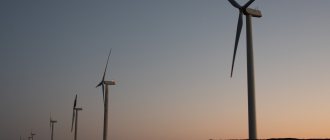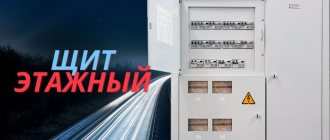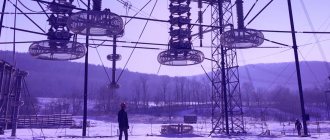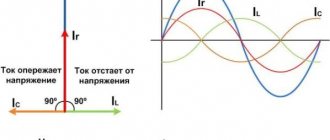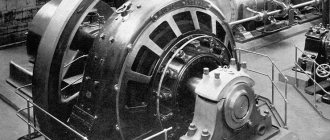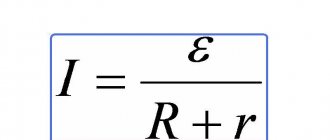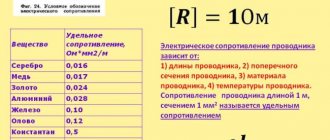The industry, which is responsible for the production, transmission, marketing and distribution of electricity, is the largest electrical power system in Russia. According to statistics, at the beginning of 2022, the country’s energy system included power plants with a capacity exceeding 250 thousand MW.
The country's unified energy system includes several subsystems. They include the energy systems of the Urals, South, Siberia, Middle Volga, Center, North-West, Unified Energy System, as well as a number of remote territories. The energy districts of Kamchatka, Magadan region, Yakutia and other regions are also equipped with all the necessary stations to ensure the supply of electricity to consumers.
CIS countries, as well as the energy systems of China and Finland, worked together with the energy system of our country. In addition, thanks to the availability of special generators in the Murmansk region, it became possible to export electricity to Norway. Twenty billion kWh were exported from Russia in 2022. Electricity imports amounted to four billion kWh.
Thermal energy
Thermal power plants running on natural gas ensure uninterrupted operation of the country's electricity industry. According to the data obtained, at the beginning of 2022, the UES of Russia operated thermal power plants with a capacity exceeding 160 thousand MW. This occupies two-thirds of the capacity of all Russian power plants. In addition to electricity, thermal energy produces heat and hot water to consumers.
Thermal energy, in addition to electricity, provides the population with hot water and heat. Thermal power plants are operated by Inter RAO, PJSC T Plus.
Electric power industry in Russia
Russia is one of the giants of electricity generation and a leading power in the field of electricity. Advanced technologies, rich natural resources, and many fast, deep rivers have made it possible to develop and commission modern, highly efficient nuclear power plants and hydroelectric power plants. Constant development and improvement of technology has led to the formation of one of the world's largest energy networks, which includes a colossal amount of generated and consumed electrical current.
The Russian electric power industry is divided into several large energy companies, which, as a rule, operate on a territorial basis and are responsible for their strictly defined share of the industry. The country's main generation capacity lies in nuclear and hydroelectric power plants, where the latter provide about 18-20% of electricity per year.
It is important to note that existing power generating stations are constantly being modernized and new ones are commissioned. Today, the total volume of generated electricity fully covers all the needs of industry and society, allowing for a stable increase in energy exports to neighboring countries.
Hydropower
Facilities in this industry exist in order to reduce the cost of operating the electric power industry and increase its reliability. High maneuverability allows hydroelectric power stations to take on a significant part of the load schedule, thanks to which nuclear and thermal power plants operate in economical modes.
According to 2022 data, 99 hydroelectric power plants operated in Russia, as well as three more pumped storage power plants. The total capacity of all facilities was 51.7 GW. At the same time, the Russian electric power industry spends 20% of its total power to operate the industry. Among the companies operating the capacities of Russian hydroelectric power stations are RusHydro and EuroSibEnergo.
Electric power industry of the world
(Power plant in USA)
Any large state with a developed industrial sector will always be a very large producer and consumer of electricity. Consequently, the electric power industry in any of these states is a strategically important industrial sector that is constantly in need of development. Countries with a developed electric power industry include: Russia, the USA, Germany, France, Japan, China, India and some other countries where either a consistently high level of economy and industrial potential is observed, or there is active economic growth.
Renewable energy
The industry is represented by the work of the following systems: wind, solar, and geothermal energy. In addition, it includes the experimental Kislogubskaya power plant, as well as stations based on biofuel and biogas. Electricity generation by facilities in this industry is small. In 2022, it amounted to only 0.1% of total generation (1.4 billion kWh). The capacity of all such power plants is slightly more than 1000 MW. To stimulate the development of renewable energy, the state is carrying out a number of activities, including competitive selection of power plants.
Electricity production volumes
The modern energy complex of Russia ranks 4th in the world in terms of production and export of electricity. This is one of the basic areas that provides the state with energy resources. The energy industry employs more than 2 million people.
The unit of measurement for the volume of electricity is W (watt) and KW (kilowatt). On an industrial scale, MW (megawatt) is used - 1 million watts, GW (gigawatt) - 1 billion watts.
The energy system includes hundreds of power plants operating on various types of fuel.
Wind power
The first wind turbines for agriculture and wind power stations appeared in the country in the 1920s. In those years, the first “pilot” installations illuminated about two hundred yards or made the mill work. In the early 1930s, the Ufimtsev wind power station, equipped with an inertial battery, was built in Kursk. A little later, a similar power plant with a capacity of 100 kilowatts came into operation in Balaklava. Today, such stations operate in sparsely populated villages, where it is difficult to obtain electricity in any other way. According to data from the beginning of 2022, wind energy capacity amounted to just over 100 MW (less than one percent) of the total capacity of the country’s entire energy system.
Non-traditional energy sources
Alternative (non-traditional) energy sources are processes and substances that exist in natural space, with the help of which the necessary energy can be obtained. In simple words, these are renewable energy sources. These include:
- solar energy;
- wind energy;
- bioenergy;
- geothermal energy;
- energy of atmospheric electricity;
- energy of the seas and oceans;
- thunderstorm energy.
The use of alternative energy sources makes it possible to reduce human dependence on non-renewable resources. In addition, such sources have a positive effect on the environment.
So, let's see what alternative energy sources are used in our country:
- Solar power plants have recently become increasingly widespread among the population. Energy is obtained thanks to special photocells that are installed at individual facilities or solar stations. Solar panels, as an energy source, began to be used for street lighting and traffic lights. The efficiency of solar power plants depends on weather conditions; a large number of sunny days is important for their operation. In Russia, the best areas for the construction of stations are the Krasnodar Territory, Crimea, Eastern Siberia, and the Magadan Region. Today, the capacity of all solar stations exceeds 400 MW. Some of the largest are Orskaya (Orenburg region), Buribaevskaya (Republic of Bashkortostan). More than 10 power plants with a capacity of 20 MW operate in Crimea.
- Wind power plants - they work thanks to the installation of wind turbine converters. Their construction requires significant areas. For greater efficiency, wind turbines are installed 10-12 km from the sea coast, in the steppe. In Russia, the best areas are the far north, the sea coasts in the northern, eastern and southwestern parts of the country. On an industrial scale, electricity is generated at the Zelenograd (Kaliningrad region), Ostaninskaya (Crimea), Tarkhankutskaya (Crimea) and Saki (Crimea) wind turbines . In the future, the creation of 22 more wind power plants with a total capacity of 2,500 MW.
- Geothermal is another unconventional source of energy. The heat generated by the earth's crust is used. In the Russian Federation, you can get it in the Far East, the Caucasus, Krasnodar and Stavropol Territories. In these regions, the temperature of geothermal waters reaches +125 degrees. There are 5 geothermal power plants in the country - Pauzhetskaya, Mutnovskaya and Verkhne-Muntovskaya on Kamchatka, Mendeleevskaya on Kunashir Island and Okeanskaya on Iturup Island.
- Hydropower is the most common type of non-traditional energy sources in Russia. In addition to the construction of hydroelectric power stations on rivers, the country uses tidal energy. The Kislogubskaya tidal power plant operates in the Murmansk region. Projects for the construction of such stations in the White and Okhotsk Seas are currently being developed.
- Biofuels - the use of this unconventional energy source is not widespread at the moment. But thanks to the development of the forestry and woodworking industries, it can become a prospect for the near future. Recently, wood waste processing plants have been built in the country. They are used to produce fuel briquettes and pellets (granules). They serve as fuel for various boilers, in the process of which thermal and electrical energy is generated. Agricultural waste is a source of liquid fuel and biogas.
Electric power industry through the eyes of a private investor
The electricity industry provides many options for private investment. In this industry there are blue chips and deep-echelon issuers, dividend histories and growth companies, state corporations and private businesses. And the industry itself is very interesting in its structure. Without understanding this structure, it can be difficult for novice investors to understand the peculiarities of the work of a particular issuer in this market. The topic is very broad, but I tried to collect the most significant, in my opinion, information about the functioning of the electric power industry and the role of the main market players. Be careful, longread)
Market structure
In Russia, the electric power industry is one of the ten industries with the largest contribution to GDP. At the same time, electricity consumption is growing all over the world, and Russia is a net exporter of electricity. In addition to consumers themselves, the electricity market includes three more segments:
- generation
- transmission and distribution
- sales
In general, it schematically looks like this:
Scheme of functioning of the Russian electric power industry (source: https://www.myenergy.ru/russia/)
Generating companies generate electricity and supply it to the market. Sales organizations buy electricity on the wholesale market and sell it to end consumers. Large industrial consumers can purchase electricity and power directly from the wholesale market. And grid companies transmit electricity from generating facilities to consumers, and also provide technological connections to new consumers.
In addition to electricity itself, market participants also buy and sell power under separate contracts, as an independent product. By selling power, the electricity supplier actually guarantees the buyer that appropriate generating equipment has been allocated to meet his needs and is in constant readiness to provide electricity of the required quality and volume. The presence of such a market allows buyers to essentially reserve the necessary power for themselves and be confident in its availability in the future. And this mechanism helps generating companies maintain the optimal configuration of production assets. This mechanism prevents power shortages during peak loads.
The final price of electricity is formed from the cost of generation, electricity grid tariffs for energy transmission and a sales premium. Moreover, the last element has the least weight. Whereas the generation and transportation of electricity can account for 40-60% of the final price.
The electricity and capacity market itself is divided into the wholesale electricity and capacity market (WEM) and retail. In the wholesale market, supply is formed by generating companies. All power plants with an installed capacity of more than 25 MW are required to sell electricity through the WECM. Large industrial consumers, sales companies and suppliers of last resort can buy electricity wholesale. And in the retail market, sales companies already act as sellers, selling electricity to the population and small enterprises. Small power plants can choose to operate through either the wholesale or retail markets.
Tariffs set by the state apply to the population and similar consumer groups. But for other consumers, prices for electricity and power depend on being in a particular price zone. The first price zone is formed by the central and southern regions of the European part of the country and the Urals. The second price zone is Siberia. In these zones, pricing has a competitive market basis. But the northern regions (Arkhangelsk region, Komi Republic), as well as the Kaliningrad region and the Far East are allocated to the so-called “non-price zones”. Here, tariffs are regulated by the government, since the number of power plants, the level of infrastructure development or its isolation do not yet allow the transition to market mechanisms.
Source: Association “NP Market Council”
As for capacity pricing, a separate procedure is provided for this product, called competitive power take-off (CPO). At the same time, only the most competitive part of suppliers' applications is selected in the amount necessary to satisfy existing demand.
Generation
Electric power industry begins with generation. Of the three industry segments, generation is the most market-oriented and competitive. According to the Ministry of Energy, the largest contribution to electricity production in Russia, approximately 60%, comes from thermal power plants. This is not surprising given such reserves of all types of fuel in the country. Hydroelectric power stations and nuclear power plants each account for slightly less than 20% of total output.
Interestingly, about half of the country’s total electricity is generated by just 51 hydro and thermal power plants. Another 19% of the generated electricity comes from 10 nuclear power plants. Moreover, there are more than 1.5 thousand power plants in Russia. It’s just that most of them are relatively small capacities.
Concentration of assets is also noticeable in the corporate context. The 12 largest companies own about 90% of all generating capacity:
The largest power generation companies in Russia (source https://www.myenergy.ru/russia/)
However, investors have plenty to choose from! These are shares of the companies RusHydro, Inter RAO, Unipro, Enel, Quadra, as well as Mosenergo, TGK-1 and OGK-2, members of Gazprom Energo Holding (GEH). It is not possible to become a co-owner of EuroSibEnergo directly, but you can buy receipts from the parent company, the En+ group. The “makeweight” will be Rusal, a member of the same group, which is also the main consumer of electricity generated by EuroSibEnergo. In my opinion, it is very convenient. The rest of the major players are not represented on the exchange market. But there are also less liquid shares of some electricity producers. Some of them are subsidiaries of the large holdings listed above.
The business model of electricity generation is quite simple: buy fuel, turn it into electricity and sell the electricity. Accordingly, the financial results of operating activities depend on the cost of purchased energy resources and technological efficiency. What stands out here are hydroelectric power plants, which use renewable and conditionally free energy sources. The largest share of hydro generation belongs to the companies RusHydro, EuroSibEnergo (En+) and TGK-1. Thermal generation in the first price zone mainly uses gas as fuel. Coal power plants are more expensive to build, have low efficiency and are not environmentally friendly. But in the regions of the second price zone there is a lot of cheap coal, so coal stations are more common in this part of the country.
Large hydroelectric power plants are also concentrated mostly in the second price zone. Therefore, in Siberia the cost of electricity and power is significantly lower than in the first zone. The operation of hydroelectric power plants also has a seasonal effect on the overall volume of supply on the market, and therefore on prices. Typically during spring floods, hydroelectric power plants generate a lot of cheap electricity. Accordingly, during these periods prices are slightly lower. When the peak of hydrogeneration passes, the share of more expensive thermal generation in the total output increases.
It is also necessary to mention the Russian Government’s support for generating companies, or rather their investment activities. For this purpose, there is a mechanism for power supply agreements (PDM). As part of this program, companies invest in the construction of new (DPM-1) or modernization of worn-out (DPM-2) capacities. At the same time, consumers guarantee the return of these investments with a certain profitability through increased payments for the provision of power. Capacity within the framework of the CSA is paid outside the framework of the KOM procedure.
Electrical networks
Electrical energy is transmitted from power plants to consumers through electrical networks connected by transformer substations. There are main and distribution networks.
Trunk networks are high-voltage lines connecting individual regions and even countries, as well as the largest generation sources and consumption centers. This type of power transmission line is used for large power flows and, as a rule, over long distances. The main networks are part of the Federal Grid Company of the Unified Energy System of Russia. And this is one of the most undervalued blue chips, and with good dividends.
Distribution networks are designed to deliver electricity to the consumer or to other substations. They also serve to collect power from relatively small power plants (up to hundreds of megawatts). Since network companies are natural monopolies, their tariffs are set by the state. The stock market offers a large selection of companies in this segment:
- IDGC (Interregional Distribution Network Company) of Center and Volga Region
- IDGC of Center
- IDGC of the North-West
- IDGC of Urals
- IDGC of Volga
- IDGC of the South
- IDGC of the North Caucasus
- IDGC of Siberia
- Moscow United Electric Grid Company (MOESK)
- Lenenergo
- Kubanenergo
- Tomsk distribution company
It must be said that these companies are very heterogeneous in terms of investment attractiveness. This is largely due to the level of economic development of the respective regions. Companies operating in industrialized areas tend to be profitable and pay healthy dividends. DGCs from depressed regions have financial difficulties and often survive due to external support.
And this support is a reason to remember the main power grid, which owns not only all distribution networks, but also FGC UES. Rosseti shares are also traded on the stock exchange, but there is not much of an economic component in the actions of this issuer. So far, Rosseti is mainly engaged in siphoning dividends from profitable subsidiaries and redirecting this money to support problem ones. The remaining funds of Rosseti are safely utilized in various investment projects of ambiguous prospects.
But this scheme of functioning of the “mother” of all electric grid companies gives private investors the opportunity to join in the distribution of profits of its “subsidiaries”. You just need to buy shares of the most efficient and profitable networks and receive dividends together with the majority shareholder. In general, the business of electric grid companies requires fairly stable cash flows. Therefore, the best representatives of this segment are well suited for an income portfolio.
In the cost structure of DGCs, personnel salaries, compensation for losses during electricity transmission and, of course, services for the transmission itself are of greater importance. And in addition to the dynamics of operating expenses, an investor in network companies needs to monitor their work with accounts receivable. We will see why this is important later.
Sales companies
Electricity sales to large end consumers can also be carried out by the generating companies themselves directly through the wholesale market. But still, this is mainly done by sales companies and guaranteeing suppliers. Many of them are public companies and are represented on the stock market. And the largest private player in this market is the group. On the Moscow Exchange you can buy both shares of the holding itself and its subsidiaries.
But whether it’s worth buying them is a big question. All shares of energy supply companies are low-liquid securities of the 2-3 echelons of the market. And this is always an additional risk factor. But even more importantly, legislative restrictions and difficult market conditions have put the energy sales business in a tight grip.
Firstly, these are fixed tariffs for some consumer groups. In fact, this means that if prices for the Wholesale Electric Power and Electricity Market rise above a certain threshold, the sales company will be forced to sell electricity to such consumers at a loss to itself.
And secondly, non-payments for supplied electricity are one of the most painful and long-standing problems of this entire industry. Consumer debts lead to a difficult financial situation for sales companies, sometimes even to their bankruptcy. And this, in turn, is already a problem for the next link in the supply chain, that is, for distribution network companies. IDGCs are forced to create reserves for the debts of sales companies, thus freezing part of their profits. And if the debt cannot be collected, then these reserves have to be written off, resulting in a real, not a “paper” loss. That is why changes in accounts receivable in the reporting of IDGCs is an important indicator.
From an investor's point of view, supply companies are of little interest, since they carry significant risks with very limited opportunities for income growth. After all, the size of the sales premium is set by regional authorities, guided by social, not commercial factors.
Results
Electric power industry is a very diverse and complex sector of the economy. Government involvement has a significant impact on the industry. This is manifested both in support measures and, for example, in limiting tariff growth.
From the point of view of a private investor, the largest selection of quality assets is available in the generation segment. This is largely due to the fact that the electric power industry is the most market-oriented in this area. Also, the attractiveness of these issuers is increased due to the government program to support investments in generation (DCS). The choice of specific securities for a portfolio is the topic of a separate article. For example, I highlight for myself the shares of RusHydro, OGK-2, TGK-1 and Unipro.
Network companies also present some investment opportunities. FGC UES stands out from other issuers in this segment due to its special position as the owner of backbone networks. Some shares of distribution grid companies also have a good investment profile, for example Lenenergo Pr, IDGC of CPU, IDGC of Volga. But we need to carefully analyze each case and take into account the situation with non-payments in the relevant regions. You also need to remember that the parent’s attitude towards shareholders can hardly be called friendly.
In the segment of sales companies, the electric power industry is represented by small issuers that are not of investment interest. Currently, there are many more promising and less risky ideas.
Published on the website “Investments in Independence”: https://invest2bfree.ru/jelektrojenergetika-glazami-chastnogo-investora/ Telegram channel: https://t.me/invest2bfree
Power plant - what is it?
An electric station is a set of installations, equipment and apparatus used directly for the production of electrical energy, as well as the structures and buildings necessary for this, located in a certain area.
There are many types of power plants. The differences lie in the technical features and design, as well as in the type of energy source used. But despite all the differences, most power plants use the rotational energy of the generator shaft for their operation.
Stations of different types are united into a Unified Energy System, which makes it possible to rationally use their capacities and supply all consumers.
Main equipment of power plants
The main equipment of power plants includes:
- generators;
- turbines;
- boilers;
- transformers;
- distribution devices;
- engines;
- switches;
- disconnectors;
- power lines;
- automation and relay protection equipment
Powerful Siberian hydroelectric power stations
Receiving electricity from hydroelectric power plants is a promising technology that allows minimizing costs, ensuring the operation of such structures for many decades. Most often, such energy facilities are located in hard-to-reach and sparsely populated areas, which makes it possible to develop large reservoirs and huge powerful dams.
The largest hydroelectric power plants in Russia are:
- Sayano-Shushenskaya.
- Krasnoyarsk.
- Bratskaya.
- Ust-Ilimskaya.
- Boguchanskaya.
Most of these energy facilities are located in Siberia, and numerous industrial enterprises in the metallurgical and chemical industries are located directly near the hydroelectric power station. For example, the capacity of the Sayano-Shushenskaya hydroelectric power station is 6400 MW, which is comparable to a nuclear power plant with two reactors.
It was at this power facility, which is located in Khakassia on the Yenisei River, that the only major disaster in Russia at a hydroelectric facility occurred in 2009, killing almost 100 people. Today, after reconstruction and modernization, this station has reached full capacity, while the management company emphasizes its complete safety .
Currently, the energy sector of Russia and the Volga region is studied as part of the school and university curriculum. It will be necessary to prepare various reports in which it is necessary to highlight the main directions, describe the state of the industry, scientific and technological progress in this area, as well as current problems associated with lack of power and ways to solve them. In recent years, the country has experienced a shortage of electricity generation, so numerous thermal power plants are being built and several nuclear power plants are being commissioned at once.
A little theory
Energy is one of the sectors of the economy of the Russian Federation, which includes both the process of generating thermal and electrical energy, as well as its transmission and operational dispatch control. In recent years, production indicators have been steadily growing, and in 2018-2019, consumption of primary fuel resources amounted to about 700 million tons of oil equivalent.
Today, Russia primarily uses natural gas, which accounts for 53% of all electricity generated. But at nuclear stations they receive only 12 percent of the total energy supplied to the general network. Total electricity production in Russia is about 1.093 trillion kilowatt-hours. At the same time, there is a trend towards a decrease in generation volumes at thermal stations with an increase in production at gas stations and alternative energy.

